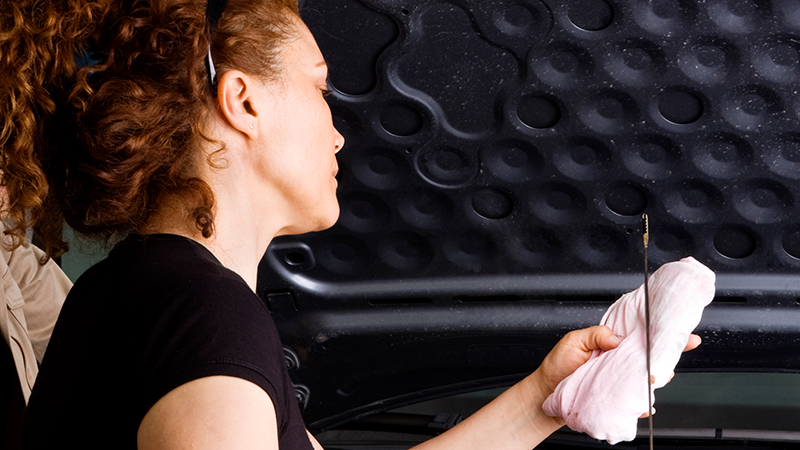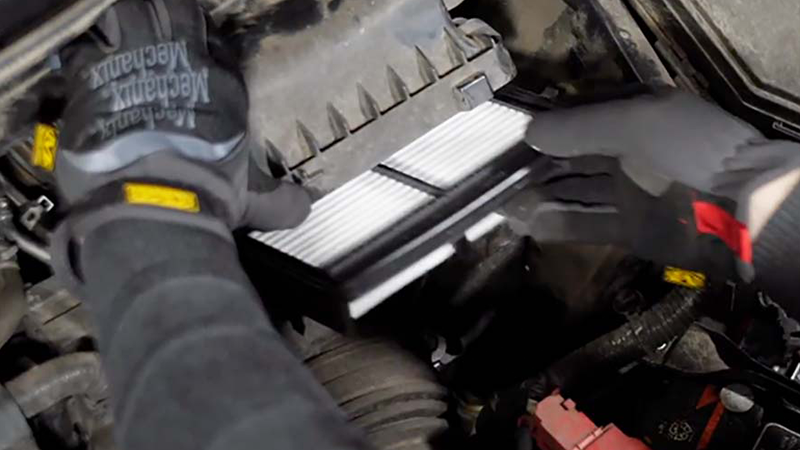Well, that depends on your vehicle's engine. Many engines will take between five to six quarts, although some small four-cylinder engines may need closer to four quarts. On the other hand, bigger engines can take up to eight or nine quarts.
The amount of oil in your engine doesn't have to be exact down to the last drop, but the amount definitely does matter for several reasons. And while figuring out the correct type of oil can be as easy as looking at the oil filler cap, it may require a little more work to find the correct capacity. Here are three easy ways to find your engine's oil capacity.

Motor Oil | SIGAUS
3 Ways to Find How Much Oil
1. Read the manual
If you have your vehicle manual, check there first for proper fluid type and amount. On the other hand, if the manual has been lost or you bought a used car without one, read on.
2. Call a pro
Give the parts department of your local dealer a call. They might ask for the following information: year, make, model and engine size. Or, more likely, they'll ask for your vehicle identification number, or VIN, which is a more reliable way for them to find the info you need. If you're unsure of where to find your VIN, you can check out our quick guide on speaking effectively with a mechanic.
3. Use online resources
If you're the type to handle things on your own, using tools such as the Advance Auto Parts website can be a great resource. Here's how you can find your vehicle's oil capacity using the Add a Vehicle tool from Advance:
Step 1. Enter Your Vehicle Information
Head over to the Advance Auto Parts website and enter your vehicle information using the Add a Vehicle tool. You have the option to search by year/make/model, license plate, or VIN. Keep in mind that if you search by year/make/model, you'll also need to know which engine your vehicle has if there are multiple options.
Step 2. Read Fitment Details
Search for motor oil, and take a look at the details of the green Exact Fit message in the search results. Fitment details such as oil type, viscosity and capacity for your vehicle are provided for most vehicles.
That's it. Two easy steps.
Note that the amount is with a filter change. The amount of oil your engine needs will be less if you don't replace the filter, but we recommend changing your oil filter with every oil change. Fortunately, that's an easy job, and we can guide you through it.
After adding oil, it's important to check the level. To do that, secure the oil filler cap and run the engine for about 30 seconds. After letting the oil settle for a minute or two, pull the dipstick and wipe it clean. Insert it fully and pull it again, this time checking to confirm the level is at the "full" mark on the dipstick. If the level is low, you can generally assume that it's about 1 quart between the lines, and then you can top off with some accuracy.
Oil Change | Getty
What happens if my oil level is too low?
Well, it's not good. Oil serves several purposes. Most of us know that it lubricates engine parts. At the same time, oil is reducing friction in the engine. One of oil's lesser known functions is that it actually plays a role in keeping the engine cool. Having the proper amount of oil is necessary for optimum performance in each of these areas.
Most vehicles can run a quart low on oil for a short time with no serious ill effects, but remember that startup is the most critical time for any engine. It's imperative that motor oil make its way to the upper-end components (cam, cam bearings, lifters, valves, timing chain) within the first second or two after startup. If the volume of oil in the crankcase is too low, it's not going to be able to reach these crucial parts quickly.
What happens if my oil level is too high?
Also, not good. If there's too much motor oil in the crankcase, the oil pump and crankshaft tend to aerate it and whip it into a froth. It practically turns all the moving parts in the engine into one big oil pump, while the intake for the oil pump itself will be picking up a lot of air along with the oil. Remember that at highway speed, the crankshaft and other parts will be turning at about 20 times per second, causing a lot of agitation of the oil. Frothy, bubbly motor oil won't be able to lubricate bearings and cylinder walls well, and serious engine wear can result.
If you've still got doubts about how much motor oil your engine needs, make sure that the oil level on the dipstick is between "add one qt" and "full," and you should be fine!









